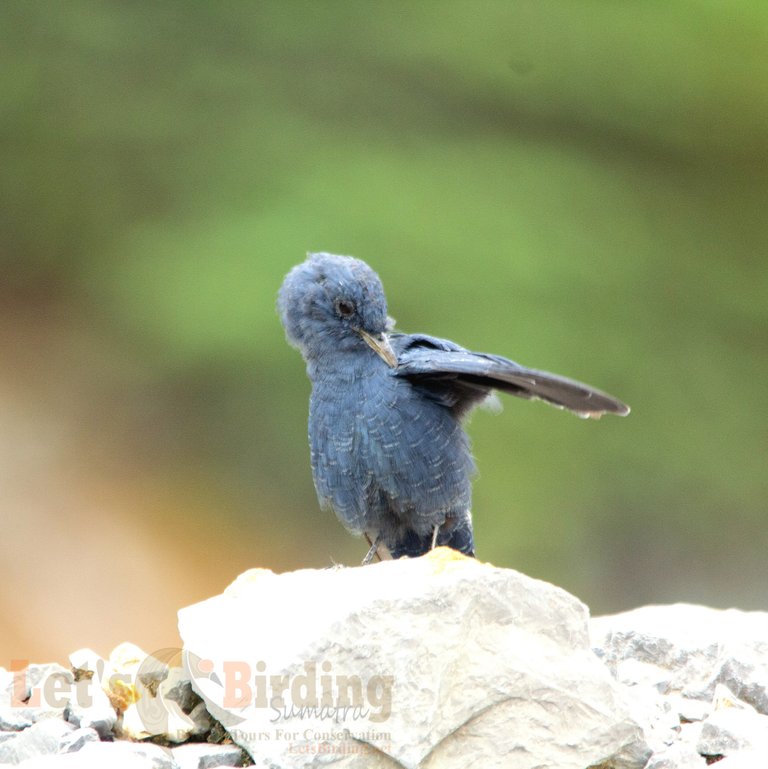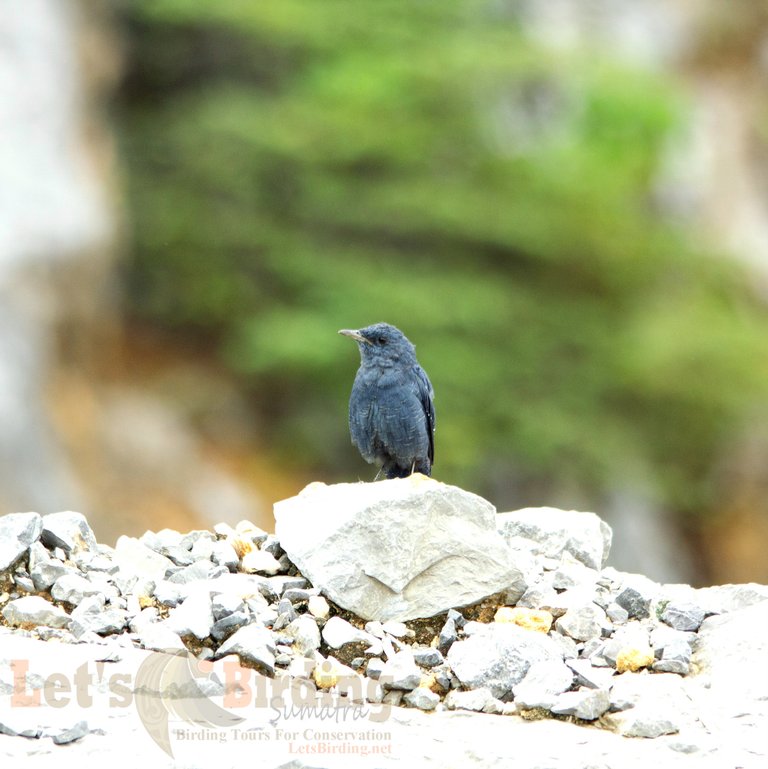| English Name | Latine Name | link |
|---|---|---|
| Blue Rock Thrush | Monticola solitarius | https://www.inaturalist.org/observations/256244083 |

The Blue Rock Thrush (Monticola solitarius) is a migratory bird that captivates birdwatchers in Sumatra. Renowned for its striking plumage and unique behavior, this bird embarks on long journeys, connecting northern Asia with the tropical regions of Southeast Asia, including Sumatra.

Characteristics and Habitat
Male Blue Rock Thrushes feature bluish-grey plumage across their bodies, while females display duller brownish tones. Measuring between 21 and 23 cm, they possess a strong, elongated beak. In Sumatra, these birds are commonly found in rocky areas, cliffs, coastal zones, and open mountainous regions. True to their Latin name, solitarius, meaning "solitary," they are often spotted alone.
Migration to Sumatra
During the northern hemisphere's winter, Blue Rock Thrushes migrate to warmer regions, including Sumatra. They typically arrive between October and March. This migration is vital for their survival, enabling them to find food and escape the harsh conditions of their breeding grounds.
Role in the Ecosystem
As insectivores and fruit eaters, Blue Rock Thrushes play a significant role in controlling insect populations and dispersing seeds. Their presence in Sumatra during migration enhances the region's biodiversity, particularly within protected habitats.
Have you ever spotted this bird during its migration? Share your experiences in the comments below!
| Camera | Lans | Location |
|---|---|---|
| Canon 60D | Sigma 150-500 mm | Aceh, Sumatra, Indonesia |

